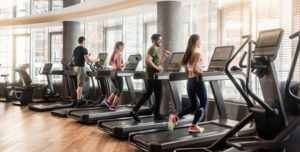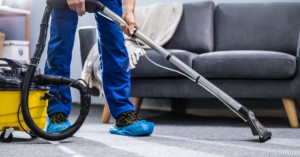Las Vegas Drywall Repair is an easy DIY home improvement project. The required tools are inexpensive. Before you begin, check that electrical wires and plumbing lines are not behind the drywall.
For holes six inches or smaller, you can use a patch kit with self-adhesive mesh patches to cover the damaged area. However, larger cracks and holes require a little more skill.

Drywall repairs are among the most common and straightforward home maintenance tasks that homeowners can perform. If a hole in drywall is small enough, it may be repaired with a spackle or drywall compound and a putty knife. A replacement piece of drywall will be needed for larger holes to ensure the gap is filled. It’s important to note that repairing a large hole in drywall is a more advanced DIY project and requires more time and patience than smaller holes.
The method and materials you use will depend on the size of the hole in the drywall you need to repair. For nail holes, you need only spackle or a small amount of drywall compound and a putty tool. Larger holes require a patch kit that includes a new piece of drywall.
Before applying the drywall patch, clean up the area around the hole. This will make it easier for the adhesive to stick. Run a utility knife along the edge of the hole to smooth it out and cut any jagged pieces.
A drywall patch kit comes with a self-adhesive fiberglass mesh that is designed to stick to the drywall. Remove the paper backing, then press the patch over the hole. Once the patch is in place, apply a few coats of drywall compound, letting each one dry before applying the next.
The last step is to sand the area smooth and paint to match the color of the surrounding wall. If you’re not happy with the final product, you can always repeat the mudding and sanding process until it is.
When a hole in drywall is left unattended, it can allow outside humidity and weather to enter your home. It can also create a pathway for pests. In addition, a hole in the wall can compromise your home’s insulation.
Whether you’re repairing a nail or a large hole, the steps are similar. Clean the area, then apply a small amount of spackle or a lightweight joint compound with a putty knife. Then, sand the patch and the surrounding wall and apply a few more coats of compound. When the surface is smooth, feather the edges to blend the patch with the surrounding wall.
Crack Repair
Drywall is not the strongest material in the world, and it doesn’t take very long for cracks to form, especially around doors and windows. It can look awful if the cracks aren’t properly repaired. The good news is that cracks in drywall are often easy to fix, though the process may take a little longer than simply smearing some spackle over it. A quality drywall crack repair will stabilize the crack and blend it into the rest of the wall, giving you a professional-looking job.
First, determine if the drywall crack is structural or non-structural. Structural cracks are more serious and indicate that something is wrong with the foundation of the house. It could be that the building is settling unevenly which puts pressure on the drywall and can cause it to crack. Other causes of drywall cracks include improper installation, extreme temperature changes, and normal wear and tear.
If the crack is structural, make a clean cut with the utility knife along the entire length of the crack. Then, carefully remove the loose material with a putty knife and clear the area of any debris. If the crack is near woodwork, protect it with painter’s tape. Use drywall tape to repair the crack, then apply a thin coat of joint compound to the taped area. Let it dry, sand it smooth, and apply another coat of joint compound.
Non-structural cracks in drywall are less serious and usually caused by a combination of factors such as temperature or humidity fluctuations, normal wear and tear, and improper installation. It’s best to repair non-structural drywall cracks as soon as possible to avoid any further damage and to keep the interior of the home looking nice.
To fix non-structural drywall cracks, begin by using a utility knife to cut away any loose drywall or damaged areas with the knife blade. Then, use a putty knife to scrape away any loose, dried joint compound (also known as drywall mud). Be sure to leave any mud that’s solidly attached. This step will prepare the drywall for patching and ensure that any subsequent repairs are as seamless as possible.
Patching Damage
A popped nail or screw, wall hanger hole and corner bead mar can be quickly fixed with a little spackle or drywall compound. It takes a bit more effort to fix larger holes or cracks, but with a little patience and some drywall patch and paint, any homeowner can create a seamless look.
A patch kit is a great choice for small holes because it includes a self-adhesive patch that simply sticks to the drywall. Larger holes and cracks require a new piece of drywall cut to size, taped, mudded and sanded before painting.
To start a patch repair first use a stud finder to locate the studs on either side of the damaged area. Mark the center of the studs on each side of the hole, then using a carpenter’s square outline the area to be cut. This is done to ensure that you don’t cut into any electrical wiring or other important parts of the drywall.
Next, carefully cut the drywall patch from a sheet of drywall that is at least an inch larger than the damaged hole. Once you have the patch, remove the paper backing from it and place it on the wall centered over the hole. Then, using a utility knife make a straight cut from the edge of the patch to the wall to smooth the edges and provide a more finished appearance.
Finally, spread a coat of joint compound over the patch using a drywall putty knife. For the best results use a flexible drywall knife, rather than a rigid one, as this better distributes the compound and “feathers out” the patch so that it blends in with the surrounding wall for a smooth finish.
Once the drywall is dry you can reinstall any trim or baseboards and then apply a fresh coat of paint. If you have used a different color paint than the original, let the patch cure before you repaint.
Another common drywall repair is to fill in the corners where two pieces of drywall meet. This is usually done with a drywall compound called spackling. It is applied with a drywall spatula and pushed into the mesh of the corner, then sanded smooth before priming and painting. This is typically the simplest repair of all, and even a novice can often do this with ease.
Painting
Drywall is used extensively in the interiors of homes and businesses and can be damaged from various causes. Whether caused by moving heavy furniture with sharp corners, scuffing the wall with a doorknob or screwdriver, water damage or even pests, the result is unsightly blemishes that can be very difficult to cover up with a quick dab of paint. When a hole or crack is large enough that it is not easily concealed with spackle, you will need to repaint the entire section of wall.
The best way to fix drywall damage is by hiring a professional painting contractor who can repair the wall, sand it smooth and apply a quality coat of paint. The most reputable companies can be found by checking reviews on consumer websites such as Angie’s List, HomeAdvisor and Yelp as well as by asking neighbors and colleagues for recommendations. Once you have located a few companies to consider, ask for an estimate and compare their quotes for the same services.
Before a drywall repair is done, it should be primed. This prevents the patch from absorbing multiple coats of paint, making it harder to match the color. It also ensures that the touch up paint will blend in with the surrounding wall instead of standing out like a sore thumb.
A good primer will also help with blending the texture of the patch with the existing wall. When sanding the wall, be sure to use fine-grit sandpaper and avoid going too deep into the holes. It is also important to sand the edges of the patch to smooth any ridges or bumps and ensure that the patch is completely concealed when painted.
After the repair has been done, you can either paint over it or put up wallpaper. It is important to wait until the drywall repair is fully dried and sanded before you put up wallpaper, as this will prevent bumps from appearing in the paper.




